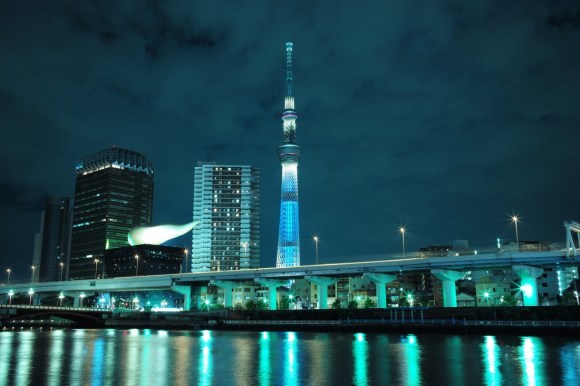
Place your bets now for what you think the biggest energy consumer in the largest city in Japan is.
If there is one thing Tokyo has, it’s a whole bunch of lights. Whether it’s the running lights of a business or lighting up an iconic landmark, the capital city of Japan is a bright metropolis of buzzing electricity. So how much does it cost to keep things lit? Japanese site Spotlight recently did some research to find out!
Electricity consumption is often calculated by kilowatt hours (kWh) and though every electric company is different, for the purpose of this article, we are going to work with a cost of US$0.25 per kilowatt hour. Locations that Spotlight looked into include Tokyo staples such as convenience stores, pachinko parlors, Rainbow Bridge, Tokyo Tower and the Skytree. So let’s see what they discovered.
First up, convenience stores!
They’ve got to keep the cold drinks cold, the hot drinks hot and heat all the food to their appropriate temperatures. They are often open 24 hours a day, 365 days a year, and one is never depressed going into a convenience store, as they provide welcome shelter from the weather — cool in summer and warm in winter. To keep these magnificent and convenient stores running, it takes about 14,416 kWh and costs about $3,604 a month.
Pachinko parlors are arguably the nosiest places in Japan and there’s really not that much action going on. It’s just people sitting at their individual machines, full of blinking, colorful lights, and trying to direct shiny balls into small slots. Even so, they are still very popular all over the country, with about 8,680 parlors counted in 2014. In a month, to keep everything running, pachinko parlors use an average of about 64,005 kWh, coming to a whopping $16,000 per facility.
The Rainbow Bridge, a 1,903 foot suspension bridge that connects Tokyo Bay and the man-made island of Odaiba, is lit up every night for about 5.5 hours. Three different colored lights are illuminated on the large, white pillars making them appear as a rainbow. From dusk to midnight, these lights uses about 28,050 kWh and comes to a monthly total of $7,012.
Perhaps one of the most iconic landmarks in the city, Tokyo Tower is often pictured in anime, manga and film to signal that, yes, we are in Tokyo. Inspired by the Eiffel Tower, its orange and white lattice makes it the second tallest structure in Tokyo. In a 30-day period, the “light up” of Tokyo Tower costs 630,000 yen which works out to about 23,333 kWh, making it about $5,833 per month.
The final structure we will look at is the newly completed Skytree. Towering above everything else in the city, it’s the tallest tower in the world and double the size of Tokyo Tower. Covered in LED lights, it generally alternates between the sky blue Iki and the purple Miyabi. As with Tokyo Tower, the Sky Tree is only lit up for about five hours at night. The various LED colors require different amounts of energy, but on average it uses 17,700 kWh in a month for a cost of $4,425.
What this means is that pachinko parlors are not only boring (in our opinion), but they’re also consuming a ridiculous amount of energy! Maybe someone can develop a way to make energy from all that knob twisting…
Source: Spotlight
Top image: Flickr/Zengame

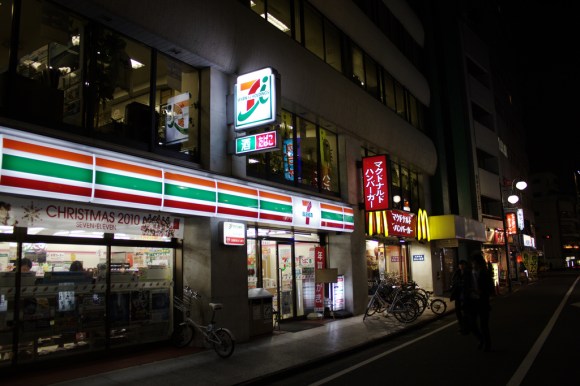

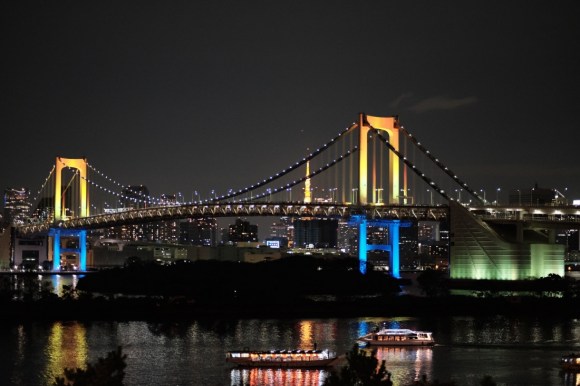
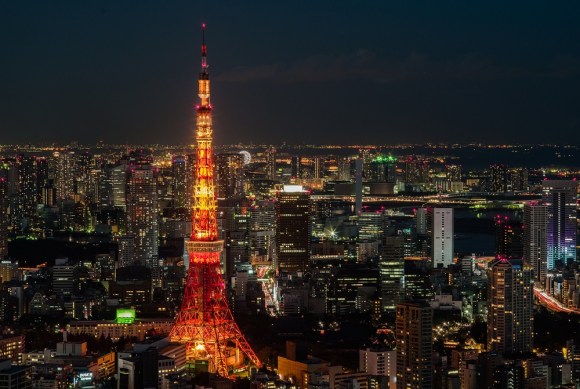
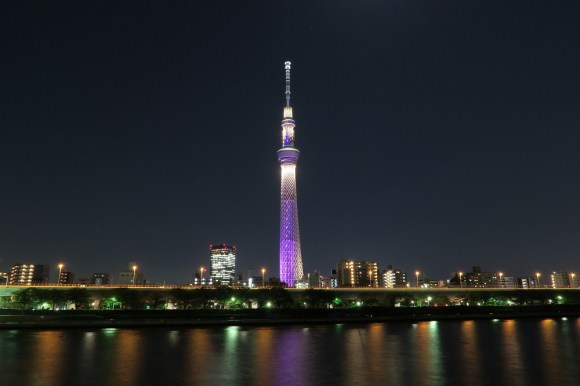
 See Tokyo’s holiday illuminations from the comfort of a taxi with the Tokyo Night Cruise
See Tokyo’s holiday illuminations from the comfort of a taxi with the Tokyo Night Cruise Tokyo Tower, Skytree don French Tricolour in show of sympathy following Paris terrorist attack
Tokyo Tower, Skytree don French Tricolour in show of sympathy following Paris terrorist attack Why have no COVID-19 clusters occurred in pachinko parlors?
Why have no COVID-19 clusters occurred in pachinko parlors? Tokyo Tower lights up beautifully in Star-Spangled Banner style for President Obama
Tokyo Tower lights up beautifully in Star-Spangled Banner style for President Obama Number of pachinko parlors in Japan decreasing rapidly, down 12 percent in two years
Number of pachinko parlors in Japan decreasing rapidly, down 12 percent in two years Red light district sushi restaurant in Tokyo shows us just how wrong we were about it
Red light district sushi restaurant in Tokyo shows us just how wrong we were about it Historical figures get manga makeovers from artists of Spy x Family, My Hero Academia and more
Historical figures get manga makeovers from artists of Spy x Family, My Hero Academia and more Sandwiches fit for a sumo served up in Osaka【Taste Test】
Sandwiches fit for a sumo served up in Osaka【Taste Test】 Tokyo Tsukiji fish market site to be redeveloped with 50,000-seat stadium, hotel, shopping center
Tokyo Tsukiji fish market site to be redeveloped with 50,000-seat stadium, hotel, shopping center McDonald’s new Happy Meals offer up cute and practical Sanrio lifestyle goods
McDonald’s new Happy Meals offer up cute and practical Sanrio lifestyle goods Akihabara pop-up shop sells goods made by Japanese prison inmates
Akihabara pop-up shop sells goods made by Japanese prison inmates Anime girl English teacher Ellen-sensei becomes VTuber/VVTUber and NFT
Anime girl English teacher Ellen-sensei becomes VTuber/VVTUber and NFT Pokémon Sleep camping suite and guestrooms coming to Tokyo Hyatt along with giant Snorlax burgers
Pokémon Sleep camping suite and guestrooms coming to Tokyo Hyatt along with giant Snorlax burgers Japanese ramen restaurants under pressure from new yen banknotes
Japanese ramen restaurants under pressure from new yen banknotes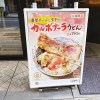 Limited-edition Carbonara Udon will anger noodle purists and pasta lovers 【Taste test】
Limited-edition Carbonara Udon will anger noodle purists and pasta lovers 【Taste test】 All-you-can-drink Starbucks and amazing views part of Tokyo’s new 170 meter-high sky lounge
All-you-can-drink Starbucks and amazing views part of Tokyo’s new 170 meter-high sky lounge More foreign tourists than ever before in history visited Japan last month
More foreign tourists than ever before in history visited Japan last month French Fries Bread in Tokyo’s Shibuya becomes a hit on social media
French Fries Bread in Tokyo’s Shibuya becomes a hit on social media Studio Ghibli releases new action figures featuring Nausicaä of the Valley of the Wind characters
Studio Ghibli releases new action figures featuring Nausicaä of the Valley of the Wind characters New private rooms on Tokaido Shinkansen change the way we travel from Tokyo to Kyoto
New private rooms on Tokaido Shinkansen change the way we travel from Tokyo to Kyoto Starbucks reopens at Shibuya Scramble Crossing with new look and design concept
Starbucks reopens at Shibuya Scramble Crossing with new look and design concept Studio Ghibli glasses cases let anime characters keep an eye on your spectacles
Studio Ghibli glasses cases let anime characters keep an eye on your spectacles Beautiful Ghibli sealing wax kits let you create accessories and elegant letter decorations【Pics】
Beautiful Ghibli sealing wax kits let you create accessories and elegant letter decorations【Pics】 Studio Ghibli releases Kiki’s Delivery Service chocolate cake pouches in Japan
Studio Ghibli releases Kiki’s Delivery Service chocolate cake pouches in Japan New definition of “Japanese whiskey” goes into effect to prevent fakes from fooling overseas buyers
New definition of “Japanese whiskey” goes into effect to prevent fakes from fooling overseas buyers Our Japanese reporter visits Costco in the U.S., finds super American and very Japanese things
Our Japanese reporter visits Costco in the U.S., finds super American and very Japanese things Studio Ghibli unveils Mother’s Day gift set that captures the love in My Neighbour Totoro
Studio Ghibli unveils Mother’s Day gift set that captures the love in My Neighbour Totoro New Japanese KitKat flavour stars Sanrio characters, including Hello Kitty
New Japanese KitKat flavour stars Sanrio characters, including Hello Kitty New Pokémon cakes let you eat your way through Pikachu and all the Eevee evolutions
New Pokémon cakes let you eat your way through Pikachu and all the Eevee evolutions Disney princesses get official manga makeovers for Manga Princess Cafe opening in Tokyo
Disney princesses get official manga makeovers for Manga Princess Cafe opening in Tokyo Sales of Japan’s most convenient train ticket/shopping payment cards suspended indefinitely
Sales of Japan’s most convenient train ticket/shopping payment cards suspended indefinitely Sold-out Studio Ghibli desktop humidifiers are back so Totoro can help you through the dry season
Sold-out Studio Ghibli desktop humidifiers are back so Totoro can help you through the dry season Japanese government to make first change to romanization spelling rules since the 1950s
Japanese government to make first change to romanization spelling rules since the 1950s Ghibli founders Toshio Suzuki and Hayao Miyazaki contribute to Japanese whisky Totoro label design
Ghibli founders Toshio Suzuki and Hayao Miyazaki contribute to Japanese whisky Totoro label design Doraemon found buried at sea as scene from 1993 anime becomes real life【Photos】
Doraemon found buried at sea as scene from 1993 anime becomes real life【Photos】 Tokyo’s most famous Starbucks is closed
Tokyo’s most famous Starbucks is closed One Piece characters’ nationalities revealed, but fans have mixed opinions
One Piece characters’ nationalities revealed, but fans have mixed opinions We asked a Uniqlo employee what four things we should buy and their suggestions didn’t disappoint
We asked a Uniqlo employee what four things we should buy and their suggestions didn’t disappoint Princesses, fruits, and blacksmiths: Study reveals the 30 most unusual family names in Japan
Princesses, fruits, and blacksmiths: Study reveals the 30 most unusual family names in Japan Is pachinko headed for extinction in Japan? Studies reveal huge drop in players, hall operators
Is pachinko headed for extinction in Japan? Studies reveal huge drop in players, hall operators Pachinko parlor worker lists the three worst types of customers in Japan’s gambling dens
Pachinko parlor worker lists the three worst types of customers in Japan’s gambling dens Proposed facial recognition system would send warning emails to families of pachinko addicts
Proposed facial recognition system would send warning emails to families of pachinko addicts Coca-Cola releases five new gorgeous limited-edition bottles in Japan
Coca-Cola releases five new gorgeous limited-edition bottles in Japan Japan’s tallest skyscraper ever, taller than Tokyo Tower, to be built near Tokyo Station
Japan’s tallest skyscraper ever, taller than Tokyo Tower, to be built near Tokyo Station Limited edition Tokyo Alfort cookies now available in sakura and matcha flavors at Tokyo Station!
Limited edition Tokyo Alfort cookies now available in sakura and matcha flavors at Tokyo Station! No, the Tokyo Skytree wasn’t lit in colors of Ukraine for solidarity…but another landmark is
No, the Tokyo Skytree wasn’t lit in colors of Ukraine for solidarity…but another landmark is Tokyo Tower opens up new Top Deck Tour with futuristic interiors, free drinks and extra services
Tokyo Tower opens up new Top Deck Tour with futuristic interiors, free drinks and extra services Is this Tokyo, or Final Fantasy? Rainy season night makes for incredible Skytree view【Photos】
Is this Tokyo, or Final Fantasy? Rainy season night makes for incredible Skytree view【Photos】 Enhance your texting with new Line stamps featuring Totoro, Catbus, and more!
Enhance your texting with new Line stamps featuring Totoro, Catbus, and more! Amazing circular rainbow spotted in Tokyo【Video】
Amazing circular rainbow spotted in Tokyo【Video】 Nearly five percent of Japanese are addicted to gambling – even though it’s still “illegal”
Nearly five percent of Japanese are addicted to gambling – even though it’s still “illegal” 10 of our absolute favorite places to spend a day in Tokyo
10 of our absolute favorite places to spend a day in Tokyo We try the new Tokyo Tower Burger from Mos Burger
We try the new Tokyo Tower Burger from Mos Burger New virtual reality attraction allows thrill-seekers to bungee jump off Tokyo Tower
New virtual reality attraction allows thrill-seekers to bungee jump off Tokyo Tower Angry customer smashes pachinko machines with hammer 【Video】
Angry customer smashes pachinko machines with hammer 【Video】
Leave a Reply